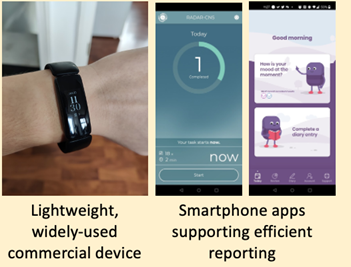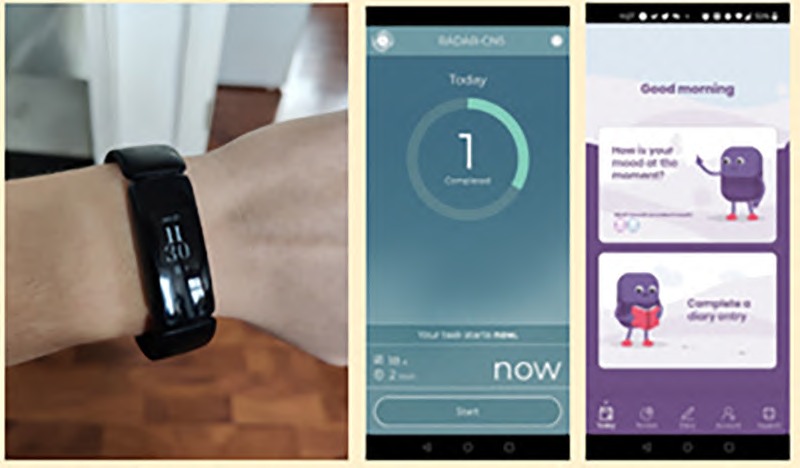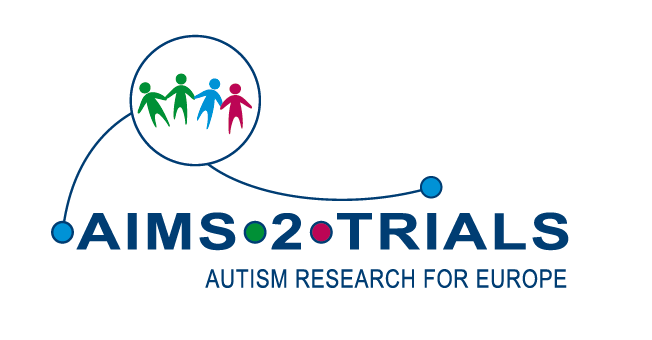AIMS-2-TRIALS researchers are working alongside autistic people to develop technology that objectively measures aspects of their experience. Wearable devices, such as smart watches, can include sensors to record information like heart rate and skin conductivity and send it to smartphones, and this information can be used to help researchers understand the ways that autistic people vary. Understanding this wide variability is key to developing interventions for the challenges faced by autistic people, because ‘one-size-fits-all’ approaches have been unsuccessful.
Why is this work important?
 Understanding the variation that characterises autistic people and developing effective interventions for the challenges they face are one objectives of the AIMS-2-TRIALS research programme. Both these goals depend on reliable, valid, and precise measurement of characteristics common to autism and frequently co-occurring difficulties (such as mood, attention, and sleep dysregulation). These measurements must then be related back to outcomes that are important and meaningful to autistic people. Innovation in wearable technology provides autistic people and researchers with a new set of tools: objective measurements that complement conventional measures relying on subjective human judgements. Digital measurement tools may also pick up subtle changes before people are aware of them in their subjective experience, which may help highlight early on which interventions look promising.
Understanding the variation that characterises autistic people and developing effective interventions for the challenges they face are one objectives of the AIMS-2-TRIALS research programme. Both these goals depend on reliable, valid, and precise measurement of characteristics common to autism and frequently co-occurring difficulties (such as mood, attention, and sleep dysregulation). These measurements must then be related back to outcomes that are important and meaningful to autistic people. Innovation in wearable technology provides autistic people and researchers with a new set of tools: objective measurements that complement conventional measures relying on subjective human judgements. Digital measurement tools may also pick up subtle changes before people are aware of them in their subjective experience, which may help highlight early on which interventions look promising.
Involving autistic people in the process.
Developing such novel technology requires careful consideration and consultation with the autism community, to address practical and ethical issues. The team, based at Kings College London aimed to open discussion with autism community representatives to jointly explore key barriers and enablers for using digital technologies. Researchers approached autistic people and parents of autistic people through several autism research organisations (AIMS-2-TRIALS A-Reps, Autistica’s Insight Group, and the Cambridge Autism Research Database) to invite participation in discussions. They also invited adolescents attending the Service for Complex Autism & Associated Neurodevelopmental Disorders at the Maudsley Hospital.
Eleven autistic adults, six parents or carers of autistic individuals and four autistic adolescents were involved. All discussions took place remotely due to the pandemic, and primarily comprised small focus groups (3-4 autistic people or parents and 1-2 researchers), conducted via Zoom Meetings. Communication preferences were accommodated: several advisers preferred a one-to-one discussion and one corresponded via email. Discussions were guided via a document sent prior to the meetings, which outlined several candidate technologies and anticipated themes, such as device comfort and data security.
This process to help guide the research will continue on an ongoing basis. So far, advisers’ input on comfort and appearance has already informed the choice of wearable devices, as well as choice and configuration of smartphone apps. It has also guided preparation of materials to help inform potential participants about the research during the consent process and beyond, including participant information sheets and a participant handbook. Next steps will include re-consulting advisers to obtain feedback on the proposed remote monitoring procedures.
Read more about AIMS-2-TRIALS work on outcome measures here and watch the AIMS-2-TRIALS website or sign up for our annual newsletter to hear about developments.








